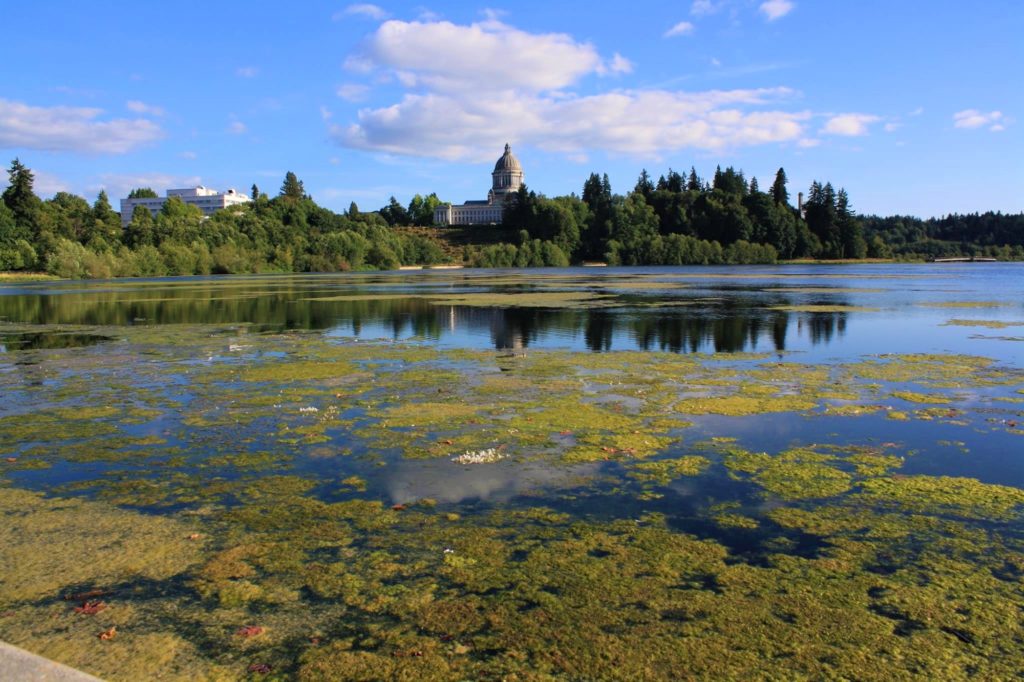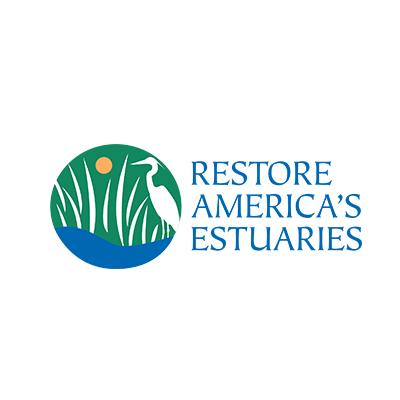What is an Estuary?
An estuary is where a river meets the sea. The Deschutes River flows 57 miles from the Gifford Pinchot/Snoqualmie National Forest into Budd Inlet of South Puget Sound. Estuaries are rich, diverse habitats that are critical to the survival of many species, feeding the web of life.
In eleven major Puget Sound estuaries, 80% of the original salt marsh and mudflat habitat have been lost. Restoration of the Deschutes estuary would add 260 acres of habitat. This area could give home to Coho, Chinook, and Chum salmon, Cutthroat trout, oysters and freshwater clams. Pacific blue herons, bald eagles, ravens, migratory birds, cormorants and more would benefit as well. The restoration study predicted that the main basin will be filled with water 80% of the time.
Can we Manage the Lake so that it can be Healthy?
No. A study done by the Department of Enterprise Services (the managing agency of the Capitol campus) found that dredging would not improve water quality of the lake or Budd Inlet. River sediments, phosphorus, and plant growth would continue to create poor water quality. The only way to improve water quality would be to dredge 300 feet deep! They found that, with no environmental benefit, permits to dredge the lake without dam removal would be difficult to attain, due to regular expenses and environmental impact.
What Environmental Benefits Would Restoration Bring?
Estuaries are some of the most productive ecosystems on earth. Vegetation filters water, removing pollutants before they enter Puget Sound, which benefits water quality. Estuaries also act as “carbon sinks” trapping CO2 in the atmosphere; this has important implications in the face of climate change. As of now Portions of the Deschutes River, Capitol Lake, and lower Budd Inlet do not meet federal water quality standards. Restoring the estuary would increase water circulation, oxygen levels, and decrease invasive plant species and their effects. The Department of Ecology covers water quality issues in the study below, an abstract is available on page 9.
“The Capitol Lake dam causes the largest negative impact on dissolved oxygen of any activity evaluated due to the dam’s combined effects of changing circulation as well as nitrogen and carbon loads”
– Department of Ecology 2015 Study


Where Can I Access More Studies and Information?

The Deschutes Estuary Feasibility Study highlights information on water levels, salinity, and sediment dispersion in the pre-dam estuary, modern lake, and predicted restoration here in chapter three.

The Squaxin Island Tribe has produced a detailed report: 2016 State of Our Watersheds Report – Headwaters of the Salish Sea. This report covers the Deschutes River watershed and others around the Salish Sea. A summary of this article is available here.

Restore America’s Estuaries offers more information on ecosystem services, carbon sequestration capabilities, and estuary restoration.

NOAA offers many educational resources on the function and importance of estuaries:



